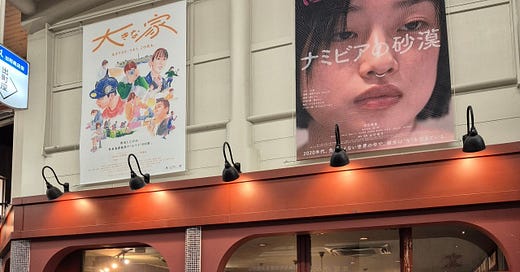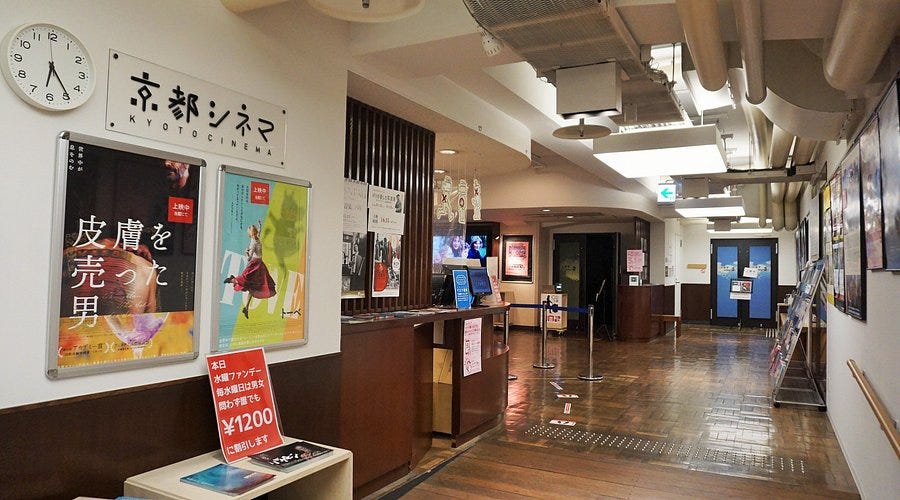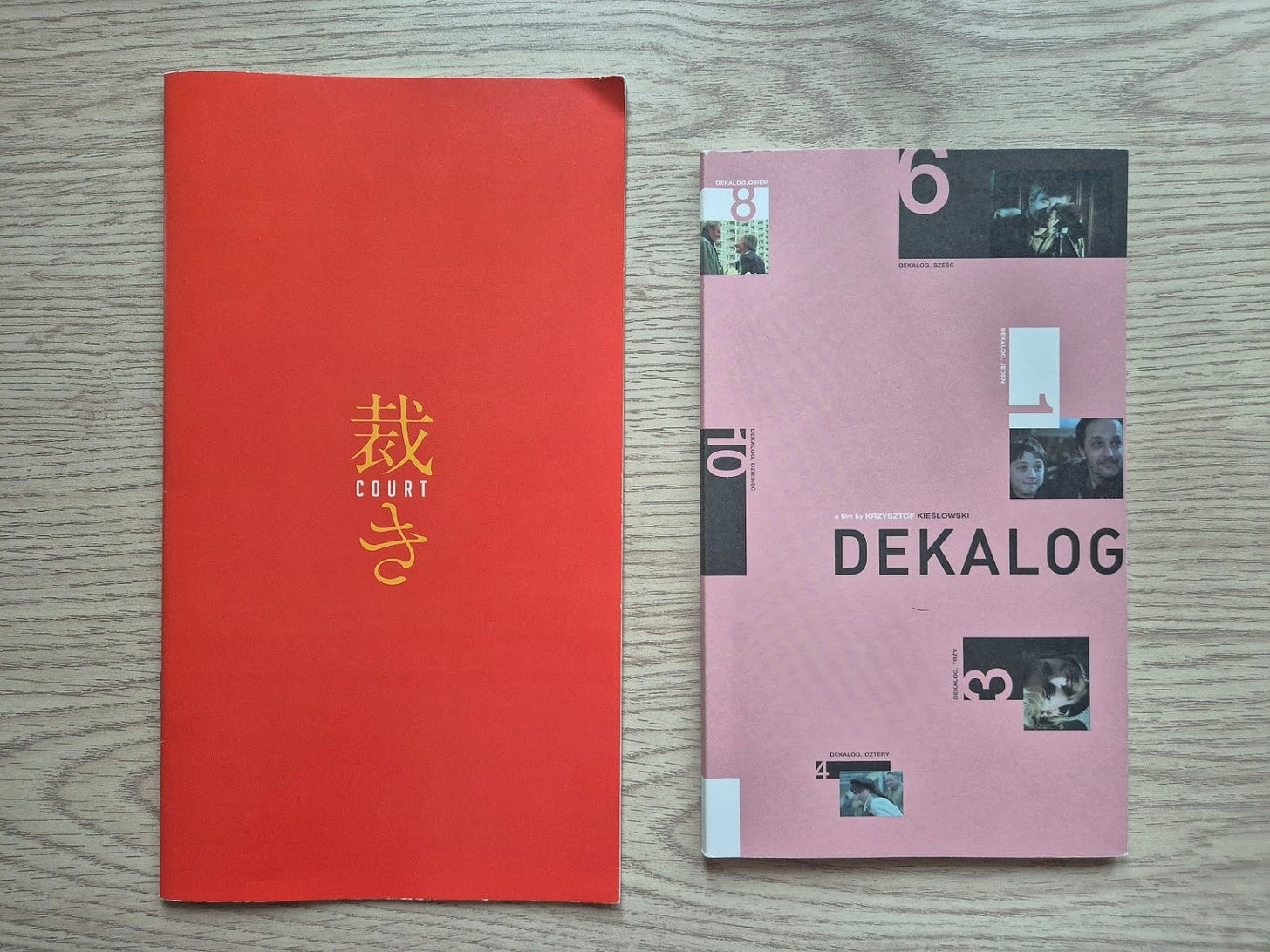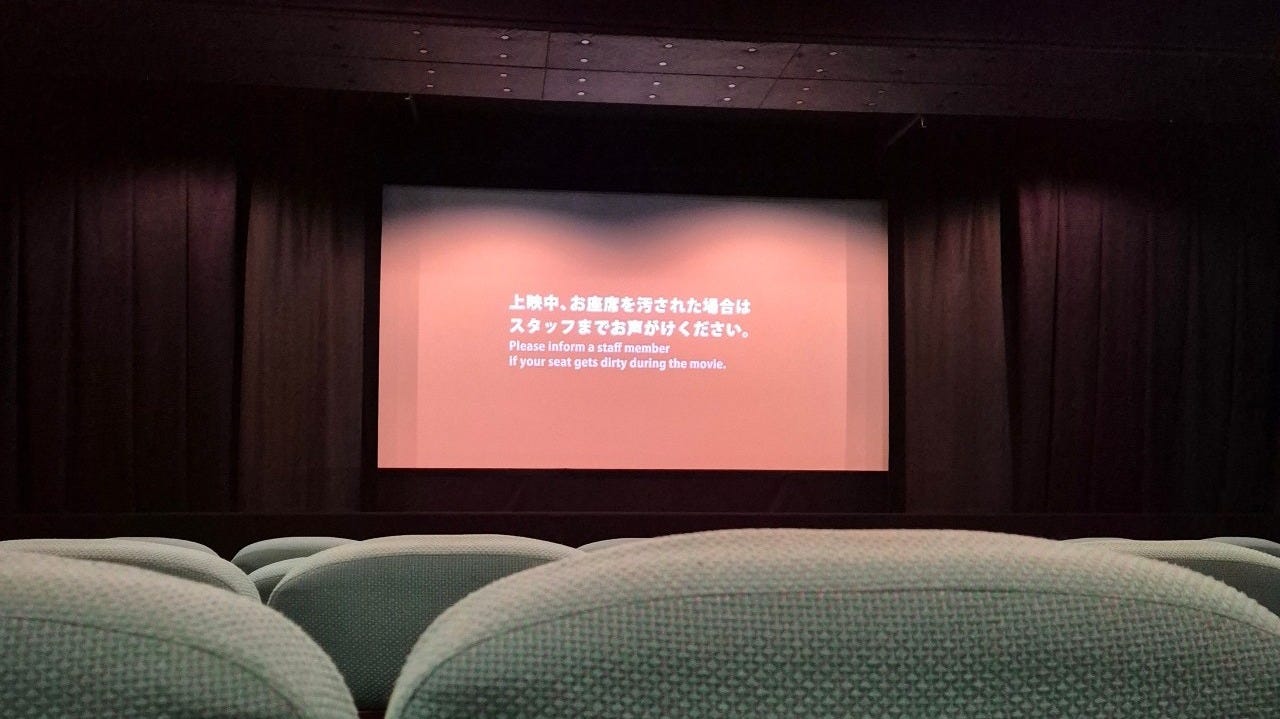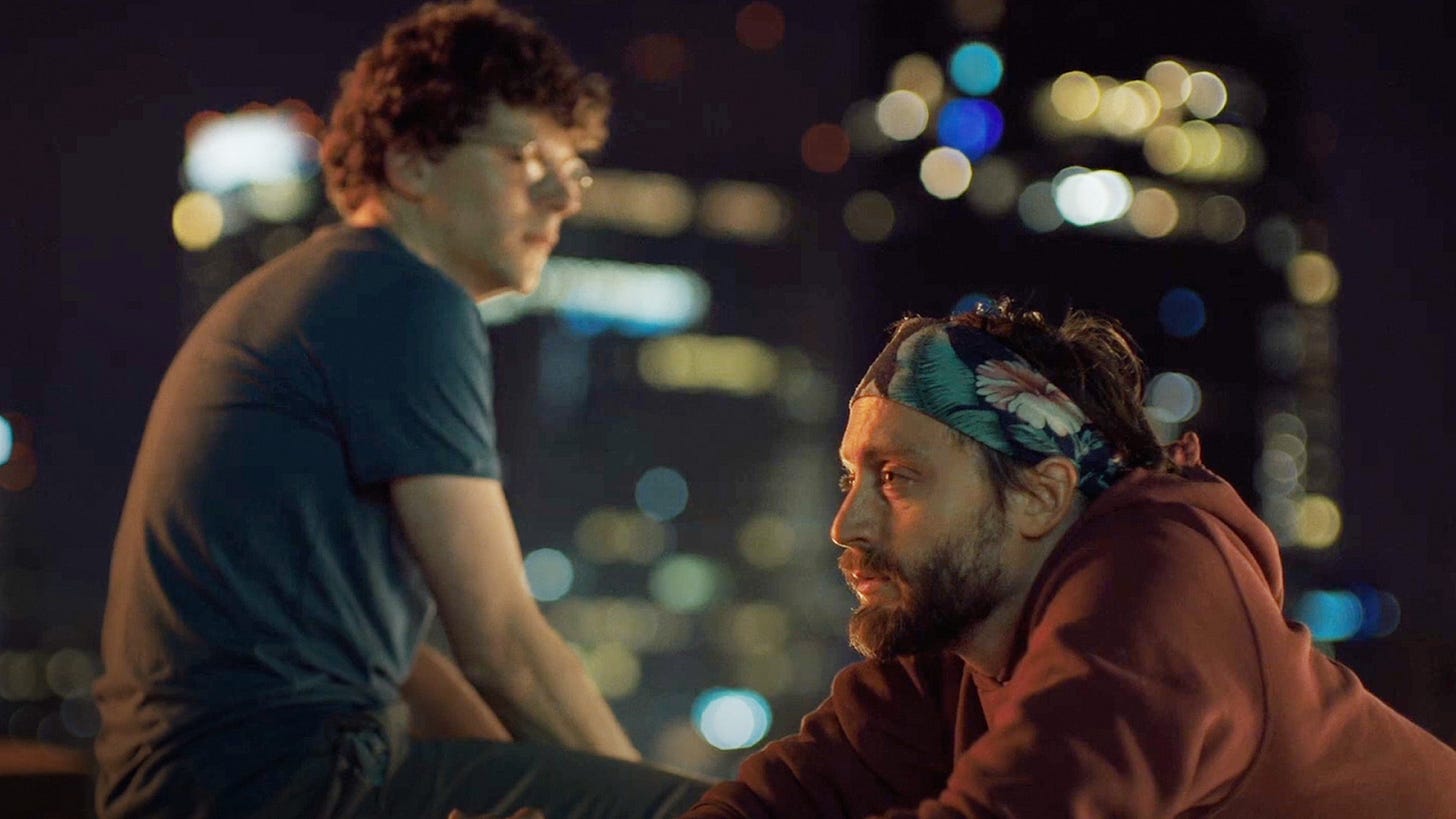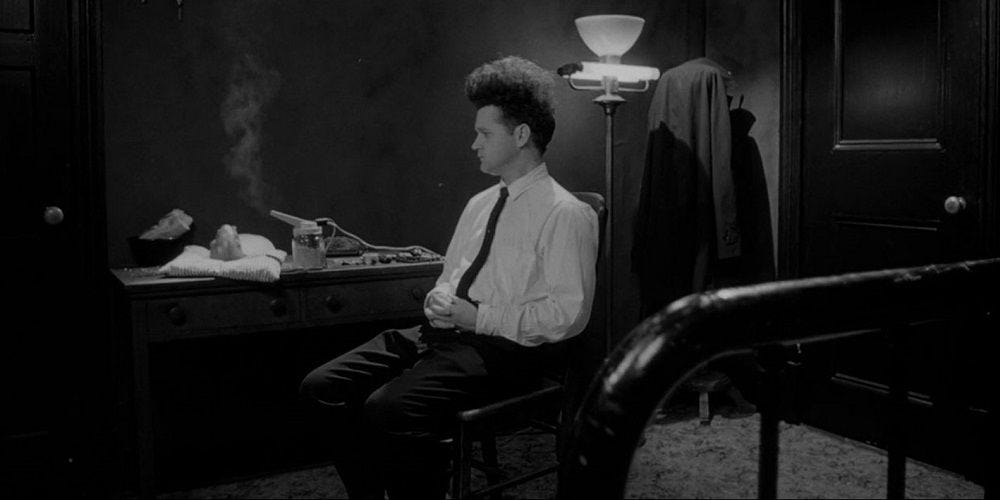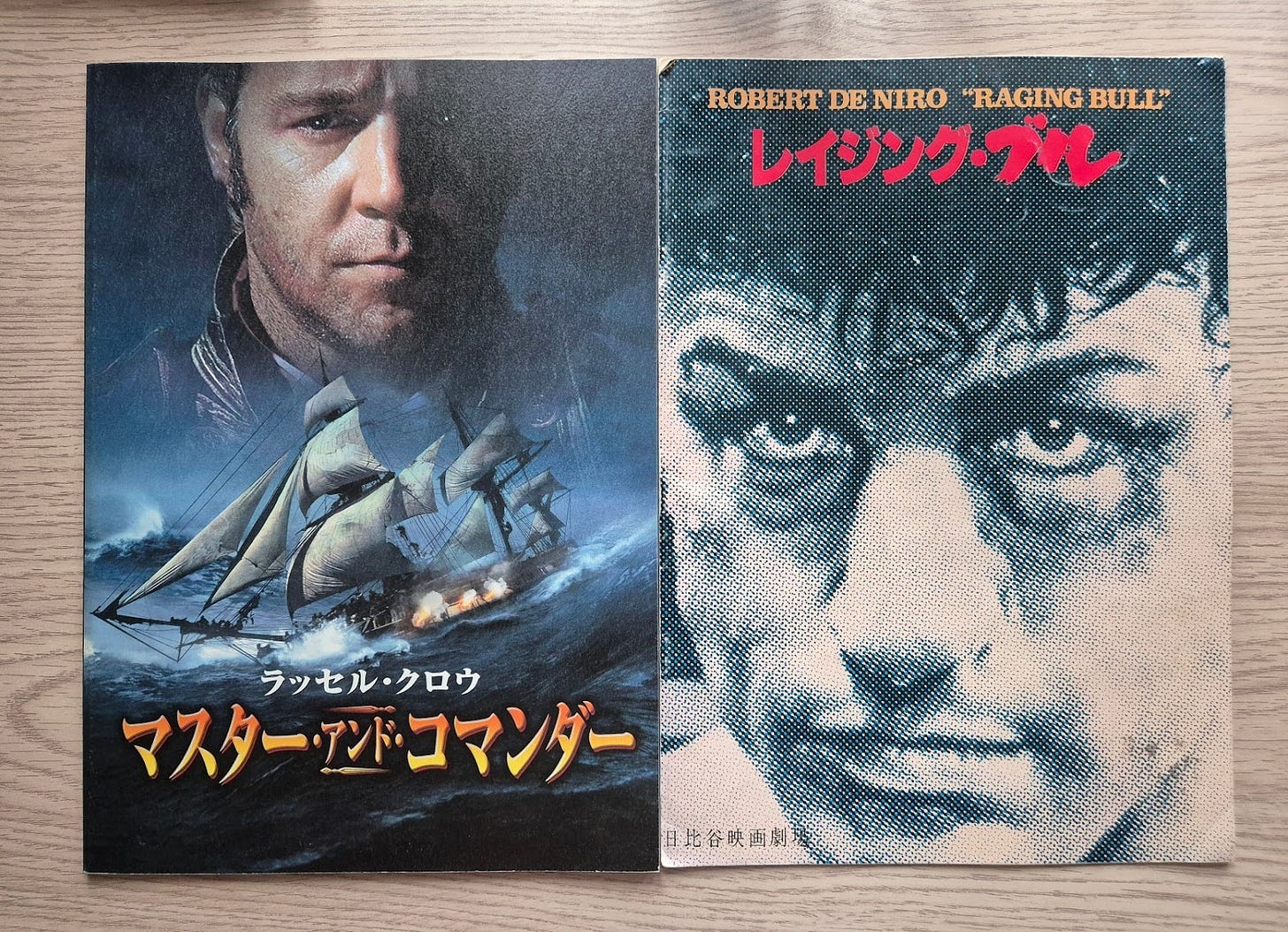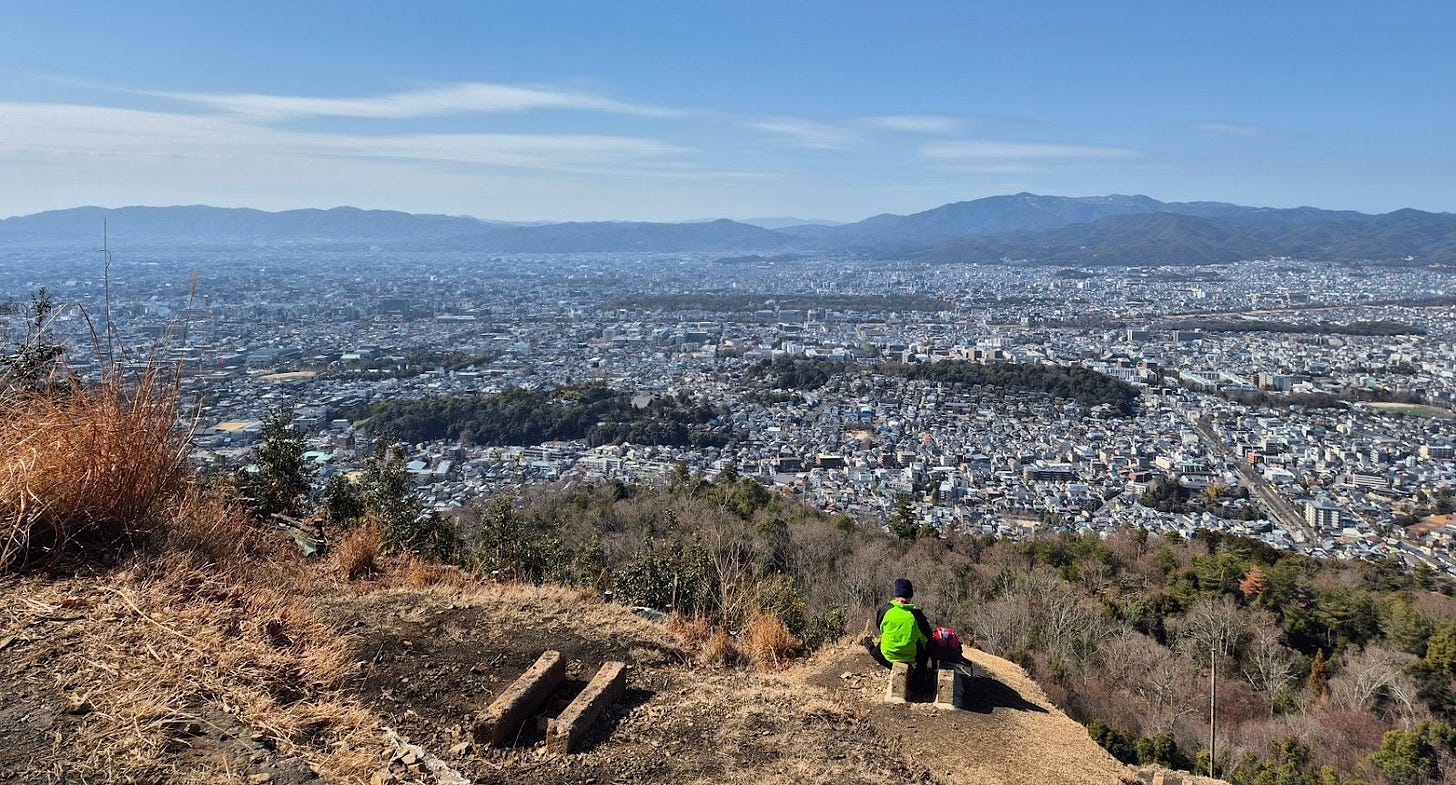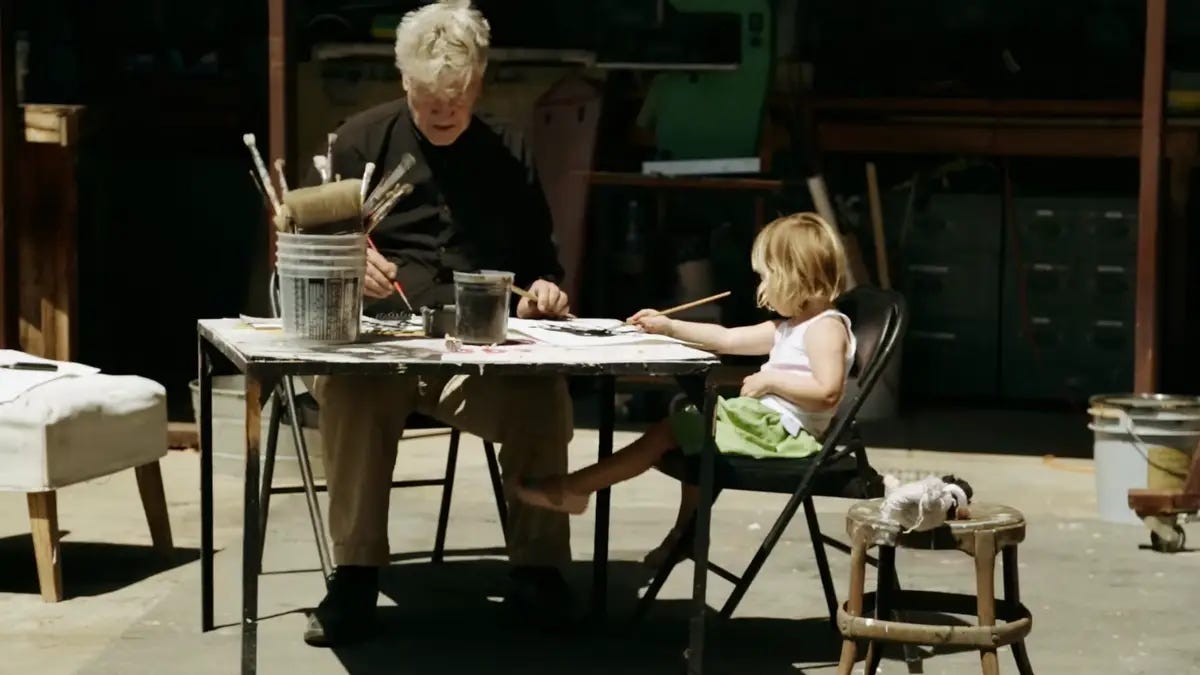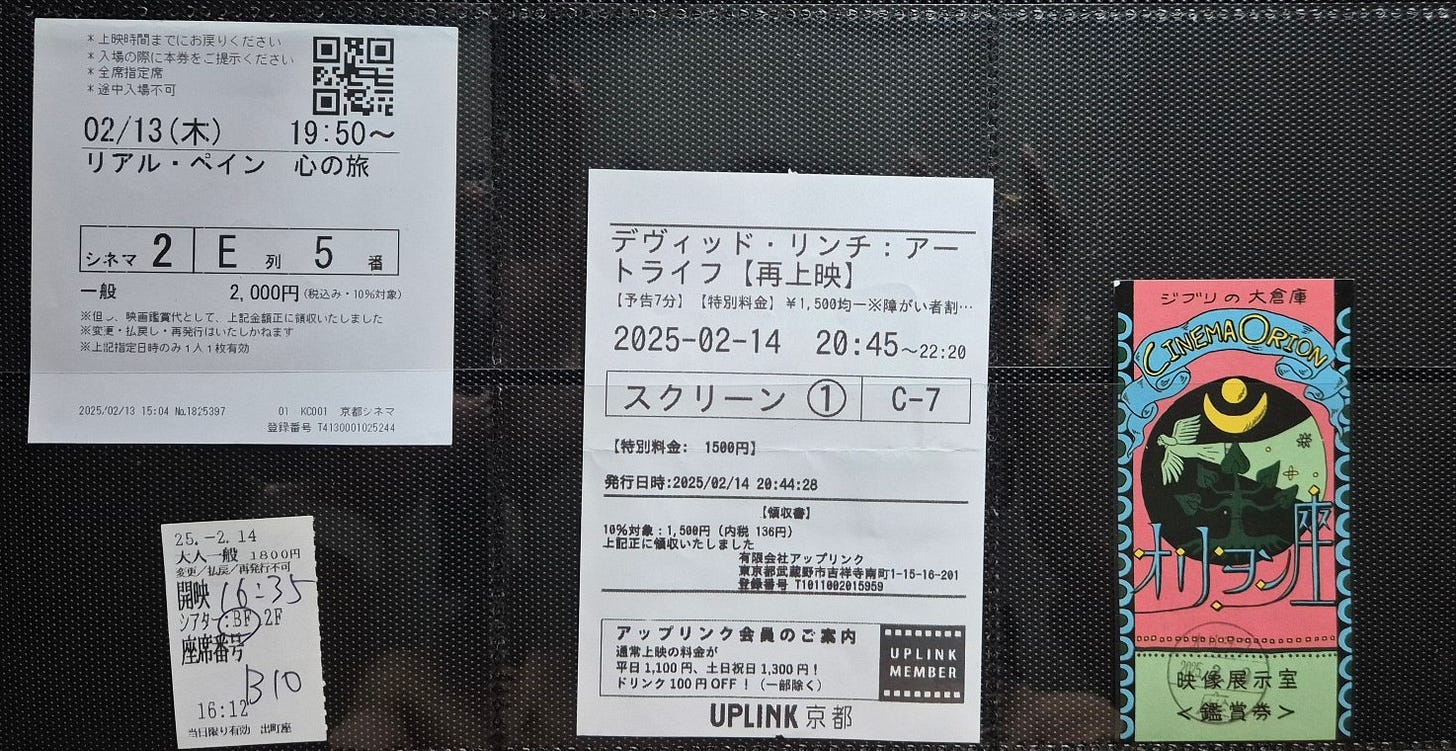Hello friends, as promised, this time we head to Kyoto!
I had not initially intended to see any films while I was in Kyoto but, while on an aimless jaunt, I walked into a small mall, Cocon Karasuma, and chanced upon its small 3-screen cinema on the top floor called Kyoto Cinema. My first instinct was to collect a few novel chirashi posters for my collection before attempting to figure out the film schedule. The cinema shows mostly recent independent films with special programmes, like its upcoming screening of Edward Yang's newly restored Mahjong.
Walking into the lobby of Kyoto Cinema energised me to seek out other cinemas, so I pulled up Google Maps to find another independent theatre only a 20 minute walk away. I bought a ticket for Jesse Eisenberg's new film, A Real Pain, for the next day and decided to trek to the other cinema.
I found the cinema Uplink Kyoto in the basement of a hip, modern looking mall called ShinPuhKan. The mall had an audio art installation on its open ground floor that played ethereal sounds in a sort of garden pathway alongside a Beams store and other upscale food, fashion, and home product stores.
A little confused by the Japanese language film schedule, I asked the counter for help and ended up in a delightful and friendly conversation with one of the staff working there (in English, helpfully for me). I was interested in their screening of the David Lynch documentary, David Lynch: The Art Life. Many cinemas in Japan were playing Lynch films after his recent passing. In our conversation, he also suggested I check out another theatre in Kyoto, Demachi-za, which was playing a wider retrospective of Lynch films.
In the back of Uplink Kyoto is a small gift shop with old film pamphlets and cinema books. I leafed through the entire collection and walked out with film pamphlets for The Decalogue and Court.
I'm especially pleased with the latter, because it's nice to think a small indie debut like Chaitanya Tamhane's could find an audience here, especially when distributing films to Japan requires additional subtitling and collateral design. It was one of my favourite films of 2014, it also won the best film prize at SGIFF that year.
Kyoto Cinema
The next day, I headed into Kyoto Cinema to watch A Real Pain on the smallest screen I have ever seen in a cinema. The seats stretched out on both sides of the screen, and it felt like the width of the seat rows were twice that of the screen. There were not too many rows, but the screen looked small from every vantage. Despite the size of the screen, I found the projection to be fantastic, plenty bright and sharp in a way that made me forget how small the screen was.
I was also surprised that they physically had someone come into the theatre to do the announcements for cinema etiquette (and maybe other information I did not understand). Typically this would be achieved by some sort of graphic or video on the screen, but I will say that the personal touch here makes the cinema experience feel less alienating, and more welcoming. Having staff come down to introduce the movie is a nice reminder that cinemas are still run by people not machines. We can automate many of the operations of running a theatre but, especially for a repertory theatre like this, somebody makes programming decisions, somebody cleans up after you, and somebody decides this cinema is worth continuing.
I was very charmed by A Real Pain which reminded me of a lot of talky French movies, like something from Mia Hansen-Love. While the heritage tour in the film forms a plot backbone, Eisenberg's writing is more focused on the characterisation of the cousins played by Kieran Culkin and himself. While Culkin and Eisenberg very much "play themselves", or maybe the archetypes they are most comfortable with, the nuance to their characterisation and relationships is exceptionally well tuned. It's impressive that Culkin is picking up so many awards for this performance because it's not an exceptionally "large" performance. In our upcoming Deep Cut episode with Andrew Ahn about his reimagining of Ang Lee's The Wedding Banquet he mentions how the Oscars tend to go to the "most" of the category rather than the "best". Culkin’s performance is definitely not the “most” but it is winning in its complex mix of charm, abrasiveness, and vulnerability.
Demachi-za
Nestled in a little shotengai (covered shopping street) in Kamigyo ward is Demachi-za: a 2-screen cinema, with each accommodating a little over 40 people each. The theatres are in the basement and upper floor. The ground floor has a bar/cafe that sells food and drink. To put it simply, Demachi-za is cool: in vibe, aesthetic, and the palpable love for film in its atmosphere. Unfortunately, I don't have photos of the interior, but I also recall the restroom doors were given some sort of Lynchian decor to fit their ongoing retrospective.
I tried to buy a ticket at the counter but was guided to a ticket machine, similar to the ones you usually see at small ramen restaurants that only take cash. You insert cash and hit a button to get a ticket, which you then present at the manned counter to select your seats in the theatre. It's an old school system, and part of me wishes more of Japan would move on from these cash-only machines. Staff had to help me out because I only had a 5000 yen note, creating more friction than the machine was supposed to reduce. However, to take a contrary point against my perennial desire for efficiency and convenience, maybe it's more important my soba tastes incredible rather than saving the minute of labour a new cashless machine might be able to. Every process can be made more efficient. We can also, as individuals, become more productive and skilled, but why? Time is worth saving, and there are many ways to, but did you really have something better to do with that minute?
Well, before I get too existential... lets talk about Eraserhead, Lynch's self-proclaimed, "most spiritual film." I saw the film in the basement theatre which was nice and cosy. Like Kyoto Cinema, the film was introduced by staff in-person. A 40-person theatre is very small! Seats were probably arranged roughly with 4 rows of 10 seats each, but with a screen larger than the one in Kyoto Cinema.
I have no idea how to even begin with Eraserhead. Having seen more Lynch films after his passing, it is incredible that such an experimental filmmaker has become so well known (although that is probably more the result of Twin Peaks’ cultural moment). Lynch's films are predominantly strange. While Eraserhead is less well-known outside a general audience, his other films have equally odd constructions and fascinations, and still Lynch remains immensely popular.
From Lynch's words from The Art Life, it seems the making of Eraserhead at AFI was a wonderful time of creativity time for him. In these dark sets, he was able to make the objects of his fantasies come alive. During the filmmaking process, Lynch was already a father, and the film’s themes of parenting and marriage are clear. What is more elusive is what exactly Lynch is trying to say about it all. For me, it is a film you need to feel. It is an awkward, ungainly movie meant to disturb. The most memorable scene to me is when the “lady in the radiator” sings and side-steps on a tiny stage while stomping worm-like creatures falling from the ceiling. The grotesque nature of what is on display, juxtaposed with the woman's bright smile and cheery disposition is dissonantly ethereal. When the industrial world beats you down sonically and physically, and home life becomes a conglomeration of stressors, one might much rather retreat into oddly comforting nightmares.
After my screening, I head into the neighbouring bookstore, a "rare book store" according to Google Maps. The inside of the store is full of a variety of books in Japanese, but outside the store is a huge selection of film pamphlets which I spent a good amount of time leafing through.
I ended up getting these:
Hungry after the screening, I looked for somewhere to get dinner. Wandering down the shotengai, I saw a sign for SOU, a small cafe/bar on the second floor of one of the units. I headed in and ordered off the set menu. In my solo escapades in Japan, wandering into these hole in the wall establishments has been an opportunity to get into conversations with random locals. At the counter seats were a couple who had recently moved to Kyoto from Tokyo and talked a little about the difference between working in the different cities.
As we talked, a lady walked in bearing gifts. It happened to be Valentine's Day and after referring to me as a "person whose name she did not know", she handed me some chocolates. This was probably the first time I've ever received chocolates for Valentine's Day, which happens to be a classic anime trope (look up giri choco)! In a funny way, one of the most Japanese things to have happened to me on this trip.
Speaking of anime, at the corner of the counter I was sat at was a small selection of guest books with messages from previous visitors. As it turns out, this shotengai happens to be the location of an anime called Tamako Market and is an anime pilgrimage stop. Alongside Tamako Market materials were also materials from the more well known anime series Sound! Euphonium and its related film, Liz and the Blue Bird, which are set in nearby Kita-Uji. It's cute thinking about all the people who've come through the shopping street just because of anime, and the number who've sat in the very seat I was in.
I got into a conversation with another customer who does art on the side, and canvassed for some trip suggestions. He recommended the hike up Daimonji which I do end up going the next day. I spent a few hours getting up to the peak with a great view of the Kyoto cityscape. Daimonji's hillside is one of a few hillsides where they light up gigantic kanji character's during Gozan no Okuribi that closes out the Obon Festival in August. Here's a photo from the character for "大/big":
Kyoto Uplink
After eating at SOU and downing a large pint of beer, I rushed to Kyoto Uplink in a bit of a stupor to catch the Lynch documentary. Armed with my ticket I walked into my cinema hall... and no one asked for my ticket. A little peculiar but either somebody stepped out or Uplink is operating within a very strong fabric of trust, which is not so unheard of in Japan.
The cinema hall I found myself in in Uplink was not very large, probably seating about 50-60 people at most. It felt like the most "standard" screen experience of the Kyoto cinemas I went to, especially with its modern self-service ticket kiosks. For this cinema, there was nobody in-person to begin the film, which I now found myself missing, and there were maybe only about five people in attendance.
David Lynch: The Art Life, released in 2016, tries to capture a sense of Lynch's ethos and how his early life led to his art. Mostly guided by Lynch's voiceover from what seemed like a single interview, it consists of a montage of archival images of Lynch, his family, and his peers, additional clips from his early work, and "present" day footage as he works on paintings. It mostly covers Lynch's early life up until he begins work on his early films, and the meandering path he takes to becoming a filmmaker.
It feels like a fool's errand to try to capture Lynch in this way, especially when his body of work operates to give a full vision of his worldview. Film Crit Hulk recently published an essay about Lynch which I do recommend reading if you're interested. We sometimes want to know artists better through behind the scenes content, personal interviews, snippets from their private lives, but their actual works, whether filtered through fiction or stylistic flourish, are themselves already the truest version of an artist's self to me. Sometimes we want to know too much about our artists, and maybe it's better to let go and let these makers remain unknowable mysteries. Lynch certainly wanted that, refusing to explain his work, and yet we know him well: his primal attraction to darkness, but always finding a way to turn the light on.
Closing
I had not expected this to be quite so long, but if you've read both of these travelogues, I appreciate your attention. I can't say I'm an expert of Japan's cine-culture in the slightest, but I hope my glimpse into it was a worthwhile dip. And like last time, here are the stubs from Kyoto below:
The last stub is a little teaser for next week: a short write-up about Ghibli Park. Talk soon!

